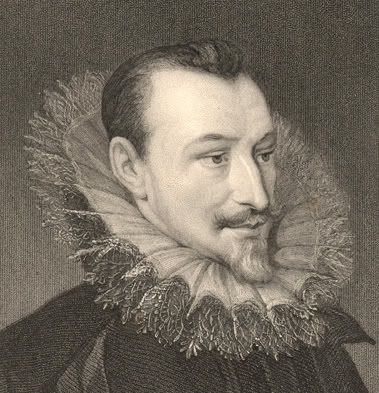The Spenserian Sonnet
The Spenserian sonnet, invented by sixteenth century English poet Edmund Spenser, cribs its structure from the Shakespearean--three quatrains and a couplet--but employs a series of "couplet links" between quatrains, as revealed in the rhyme scheme: abab, bcbc, cdcd, ee. The Spenserian sonnet, through the interweaving of the quatrains, implicitly reorganized the Shakespearean sonnet into couplets, reminiscent of the Petrarchan. One reason was to reduce the often excessive final couplet of the Shakespearean sonnet, putting less pressure on it to resolve the foregoing argument, observation, or question. Sonnet LXXI
Sonnet LXXI
Edmund Spenser
I joy to see how in your drawen work,
Yourself unto the bee ye do compare:
And me unto the Spider that doth lurk,
In close await to catch her unaware.
Right so youself were caught in cunning snare
Of a dear foe, and thralled to his love:
In whose straight bands ye now captived are
So firmly, that ye never may remove.
But as your work is woven all above,
With woodbine flowers and fragrant Eglantine;
So sweet your prison you in time shall prove,
With many dear delights bedecked fine.
And all thenceforth eternal peace shall see,
Between the spider and the gentle bee.


No comments:
Post a Comment